Today I explore a lesser-known, 8th-century Shiva temple in the city of Kanchipuram. The Kailasanathar temple complex is a cluster of sandstone buildings constructed sometime between 674-800 CE under the patronage of the Pallava dynasty. Though this temple is of exquisite architectural and spiritual merit, it remains greatly unexplored due to a lack of knowledge about the temple.
Bangalore to Kanchipuram
Towards the fag-end of 2017, Mani and I had planned a weekend trip to Mahabalipuram. Mahabalipuram is just about half a days’ drive from Bangalore. It is an excellent destination if you want to laze around the beautiful beaches spread along the eastern coast.
The drive to Mahabalipuram goes through Kanchipuram, a popular temple city in the Indian state of Tamil Nadu. Kanchi or Kanchipuram is one of the seven holy cities of India, the other six being Haridwar, Ujjain, Varanasi, Madhura, Ayodya, and Dwaraka. In the olden days when the city was known as Kanjeevaram, it served as the capital city of the Pallava Kingdom. Since it was on the way, we decided to take a break there for a couple of days and explore some of the ancient gems of the heritage city.
The drive from Bangalore was fairly routine. We initially took the national highway NH75. At Mulbagal, we switched to the Bengaluru-Tirupathi highway on NH69 to Chittor. At Chittor we turned into NH40 which connected us to NH48 at Walajapet, which led us all the way to Kanchipuram. For most parts of the route, in Karnataka as well as Tamil Nadu, we drove on toll roads and they are a pleasure to drive on.
I had already made reservations at the Pine Tree hotel. The exteriors of the hotel might appear to be a deal-breaker but the interiors were nice and clean. Though it lacks a few amenities like a lift and in-house restaurant, it is still a fair place to put up for a couple of days.
Kanchipuram is believed to be of significant antiquity and has been ruled, at different times, by the Pallavas, Medieval Cholas, Later Cholas, Later Pandyas, and even the Vijayanagar Empire. I am discounting the British here, as they were here just for the loot. The city has a number of historical monuments, the Kailasanathar Temple and Vaikunta Perumal Temple being the most prominent among them. In its heydays, the city used to be an ancient education center like Banaras and was also known as the Ghatikasthanam or a place of learning. Moreover, Kanchi was the birthplace of many literary scholars and religious saints. Buddhism and Jainism once flourished here, side by side with Sanatan dharma. Today the city is crowded with religious tourists searching for God in the many temples spread across the city.
History of Kanchi Kailasanathar Temple
Between the 6th and 9th centuries, the Pallavas were a powerful dynasty and ruled a huge chunk of southern India, including Tondaimandalam (present-day Tamil Nadu). They were passionate about art and architecture, and their reign saw an extensive growth spurt in the creation of temples.
Though Kanchipuram has innumerable temples spread across the city, I was mostly interested in exploring the Kanchi Kailasanathar temple. It is the oldest temple in Kanchipuram, located near the banks of the Vegavathi River, at the western limits of the holy city. The east-facing temple was commissioned between 685-705 AD by Pallava king Rajasimha, better known as Narasimha Varman II (700-728). The date of the foundation stone of the principal shrine is estimated to be between 550 CE to 567 CE. The temple, at that time, was named Rajasimha Pallavesvara Graham. After his demise, his son, Mahendra Varman III, is said to have added the front facade and the gopuram (tower).
Dawn at Kanchi Kailasanathar Temple
I woke up before dawn and took a quick hot shower. I left my car at the hotel and hailed an auto-rickshaw. When the auto-rickshaw dropped me off in front of the temple, it was 6.30 am and still very dark. The gates had not been opened yet. In the dim light, I could make out the front of the complex, lined with eight small shrines – two to the left of the doorway, and the rest to its right.
The temple premises is surrounded by beautiful gardens. A small square pond is located to the right side of the temple entrance. A few feet away from the entrance of the temple, a large Nandi statue sits, facing the doorway to the temple. I waited patiently for a few minutes by which time the caretaker presumably noticed me and opened the complex gates. I was the first one inside.
Tripods are not allowed to be used inside the temple premises.
Architecture of Kailasanathar Temple
Leaving my shoes outside the doorway, I entered the holy temple via a narrow passage known as “Sandharaprasada“. The cold granite kissed my naked feet. Years of weathering had rendered the granite smooth.
Before you reach the main temple, you will come face-to-face with this structure. This addition to the temple was commissioned by Rajasimha Pallava’s son, Mahendravarman III. Its walls are adorned with sculptures of several forms of Shiva like Bhikshatana (in which he is a mendicant begging for alms). You can easily make out the difference between the deterioration of this structure and the mini-shrines along the compound walls, which were clearly constructed much before.
A narrow path beside the shrine leads you to the main temple. The Kailasanathar temple is the largest among the Pallava temples. Kangapatakai, the wife of Rajasimha is also credited for the construction of this temple. The most notable contribution of Rajasimha to Pallava architecture is substituting bricks and timber for stone in the temples.
The Kanchi Kailasanathar Temple is dedicated to Shiva, referred to as Kailasanathar in this temple. His consort here is Kanakavalli Thayar. The temple design has been created so as to recreate the environment of Mount Kailasha, the abode of Shiva.
The worship of Shiva as a supreme God is being carried out in India since time immemorial. A Pasupati seal found in an archaeological site in the Indus Civilization shows Shiva in a yogi posture, surrounded by animals. The antiquity of the Pasupati can be traced to the period ranging from 2500 to 1800 BCE.
The Kailasanathar Temple is enclosed within walls in a rectangular layout and the sandstone kovils including many half-lion carvings speak volumes of architectural beauty that flourished during the reign of the Pallava Kings. Here you can see the back wall of the Gopuram where Siva is depicted along with his consort Uma and child Kartikeya.
Once you get past the gopuram, you will find yourself in front of the main temple. A circumambulating passage goes around the temple. The inner side of the temple wall houses several smaller shrines in an array, while the outer side of the wall houses statues of the temple protectors called Yali. I have laid out the structural layout of the temple for ease of understanding.
Devoid of people, early mornings at the Kailasanathar Temple are incredibly serene. The caretaker went about his business and I was alone with the disintegrating blocks of sandstone, that have quietly watched history unfolding for centuries. The silence was only interrupted by the rare worshiper, making rounds of the temple, chanting shlokas (religious chants).
Maha mandapa
The main temple has a simple layout with a tower or sikhara at the center of the complex. The foundations are made of granite, while the upper floors including the carvings are all made of sandstone. The main shrine is built in a pyramidal format, which is typical of Dravidian architecture as we will see more of it at the Shore Temple in Mahabalipuram.
The mandapa is surrounded by a high compound wall adorned with pillars with carvings of lions. These intricate carvings on sculptures and rare portrayals of Lord Shiva in his various forms in several sculptures are the prime source of attraction of many visitors to the temple.
Inside the main temple, the deity is a majestic Shivalinga in black granite. The inner sanctum is square in shape and houses a Shiva Lingam of six feet in height and three feet in diameter. The gates to the garbagriha (sanctum sanctorum) weren’t open yet. They open much later during scheduled prayer hours. So if you are into offering prayers, you should come at around 9 am.
The Shiva Lingam inside the maha mandap faces the east direction and it is a sixteen-sided one. There is a narrow circumambulatory passage around the inner sanctum that can be reached by a flight of steps. The local people are of the opinion that, the entry and exit of this passage symbolizes the birth and death of an individual.
Devakulikas
Kovil is the Tamil term for a distinct style of Hindu temple with Dravidian architecture. There are fifty-eight smaller shrines located in an array on the inner side of the temple wall. Each small shrine is comparable to a temple, in terms of architectural merit. Each of them houses an image of Shiva in his various forms, along with a shikhara built in the top.
These small shrines house seventeen different forms of Shiva as Samhara Moorty (portrayed with anger) and twenty-three forms of Shiva as Anugraha Moorty (Portrayal of Shiva showering his divine grace over the devotees). The reason, why this number of portrayals is sculptured is not known. The walls around this shrine are covered with exquisite reliefs depicting Shiva in various forms like Lingodbhava, Urdhava Tandavamurti , and the Tripurantaka.
The light was much improved by this time, with the Sun showing itself towards the front of the temple. As I went around taking pictures of these crumbling beauties a family of parrots appeared from nowhere at the roof of the temple. Below is the west side wall of the main mandapa, covered in detailed carvings of Shiva.
Towards the back in a mini shrine, I found a carving of Shiva and his consort. This bas-relief engraving portraying the image of Soma Skanda-Lord Shiva and Goddess Parvati sitting together, with Lord Subramanya seated on the lap of Parvati. This Soma Skanda image is located in several places in the temple.
Modern iconographers call this set of signs Somaskanda, meaning Shiva with Uma and their son Skanda (Sa Uma Skanda). A part of the mural on the side walls still tells the story of what was once a colorful section of the temple. This Somaskanda panel, depicting Shiva and Parvati with Karthikeya sitting on Parvati’s lap, is a repeating feature of the temples built by King Rajasimha. It can also be found at the Shore Temple also commissioned by Rajasimha.
Passing all the mini shrines, I had walked to the back passage of the compound where lies an idol of Murugan in black granite.
Lion pillars were a Pallava specialty, and in this temple, they seem to have chosen to go all out with the lions. One can say this is the richest of all Pallava shrines in terms of figural decoration.
Each of the 58 devakulikas (mini-shrines) that run around the main temple has a different lion protecting it. They have frescoes that portrayed scenes from the Sivalila and sculptures of Uma Mahesvara, Parvati, Ganapati, and Kartikeya, among others. Each of these mini shrines has a stupa on the top. The builders placed huge sandstone blocks one on top of the other and then chiseled them into shape.
More than two hundred birudas of the king Rajashima, engraved at the Kāñchi Kailasanatha temple is rare documentation in history
These sculptures of Shiva in 58 postures, present a picture of the hugeness of Hindu mythology. This adulation of Shiva can be attributed to the renaissance of the Hindu religion in the 7th Century when there arose a group of Tamil Psalmists who sang brilliant prayers to Siva and Vishnu and this energized Saivism and Vaishnavism. They are identified as the Nayanmars and Alwars. . The Shaivite poet-cum-saint hymnodists were called the Nayanmars and the Vaishnavite poet-cum saint hymnodists were called the Alvars in the Tamil tradition.
These groups added impetus to the Bhakti Movement, a historical event in the Hindu religion during the time of the Pallavas. Through the reign of the Kalabhras tribe (3rd – 6th century CE), hailing from the northern borders, the status of Hindus had gone down. Hence, with a view to reviving the Hindu religion and spreading its principles among the common people, a movement was started by Nayanmars and AlvarsThis movement attracted the attention of the people and flourished due to the hard work of the Hindu saints. The re-emergence of the Hindu religion albeit led to the decline of Jainism and Buddhism in Tamil Nadu.
Rajasimha was also a great patron of dance. The Kailasanatha temple at Kanchi contains magnificent sculptures on the mode of dancing Shiva. One can find that many of the Kanchipuram temples are made up of hard stones, but this temple is built up of sandstone, apart from granite that gives good support to the upper structure. The shore temple in Mamallapuram, built by the same king bears a strong resemblance to the Kailasanathar temple
In-between the moments of ecstasy of finding myself among these age-old works of art, I was frustrated by the damage in certain areas of the temple. You can see flaking in many places. This is caused due to salt attack. Thermal gradient and dampness increase the mobility of the salts and crystallizes within the structure near the exposed surfaces. Swelling of salt crystals below the exposed surface causes blistering and scaling of the outer layers. Standing in front of these decaying pillars, I could sense the enormous moments these shrines have seen and still stand today to tell heritage hunters like me, stories that have weathered away in the winds of time.


The iconic Kirātārjunīya panel from the Kanchi Kailasanathar temple showcases a remarkable depiction of Shiva and Arjuna. Shiva, portrayed as a hunter on the left, is seen carrying a sword and a quiver slung over his shoulders. In contrast, Arjuna is depicted with quivers on both shoulders, symbolizing his exceptional skill as a Savyasachi - one who is ambidextrous and adept at wielding a bow with both hands.
By the time I completed my pradkshina (walk-around the temple), the temple was basking in beautiful golden sunlight. The caretaker at the site told me that this is one of the few temples in Kanchipuram, which was purely a contribution of Pallava kings and which didn’t have any additions by other dynasties such as Cholas and Vijayanagara kings.
Circumambulation of temples or deity images is an integral part of Hindu and Buddhist devotional practice. The inner sanctum is believed to have positive energy and as the devotees go round the sanctum performing the pradkshina, the positive energy is also believed to be absorbed into them. I am an atheist but that doesn’t stop me from respecting faith.
Once I was done taking shots inside the temple, I walked outside to capture some of the external carvings. Compared to the carvings on the inside many of the carvings on the outside walls have deteriorated beyond the point of recognition. Amateur restoration has resulted in white patches over the sandstone rocks.
The front shrines are still better but the shivlings are in pitiful condition. The top of the stupa in most of the shrines have weathered away. It is still better compared to some other temples that have been totally destroyed by the Muhammedan invaders. Sometimes being unpopular is a blessing in disguise, otherwise, I wouldn’t be seeing these original carvings as they were created thousands of years ago.
The majority of the inscriptions inside the temple are in Sanskrit. The Pallavas issued their inscriptions in Prakrit and Sanskrit because of their Satavahana connections, and also patronized Brahmanism. The inscriptions of a temple are written so that the forthcoming generation must gain knowledge about the temple’s history. It is a matter of common sense that, the inscriptions are written in a temple in a language, which the majority of the people of that particular period knew and the language should be in wide practice. From this, we can infer that Sanskrit had a profound influence in the areas ruled by the Pallava dynasty and Kanchipuram in particular.
It was still early in the day and I believe the temple has become a popular photo-shoot spot for newly-wed couples.
This temple stands as the masterpiece of Pallava’s structural architecture. The grandeur and beauty of this famous temple cannot be described in words but must be seen and appreciated. With the Sun making its way into the sky, more and more people had started coming in.
Nandi of Kailasanathar Temple
Before leaving, I walked to the far end of the park to capture one of the most detailed Nandi bull I have seen till now. The stone Nandi sits on a pedestal facing the temple complex, surrounded by four lion pillars.
Nandi is said to be a symbolism of eternal waiting. It is not expecting Shiva to come out, it just waits on its beloved master in a meditative state. Prayer is when you talk to God, but Nandi meditates, it just listens.
The Sun was shining bright by now and there was a steady stream of people at the complex. It was time for me to get out.
As one of the most elegant temples in Kanchipuram, this temple is regarded more as an architectural wonder rather than as a holy place. The Pallavas rule continued till Tondaimandalam was captured and annexed by the Cholas at the beginning of the 10th century. The Chola Emperors continued the tradition and gave a large number of grants, land – properties, gold, and silver to the famous Shaivite temples in Kanchipuram. Encashing upon the experiences of his predecessors, the Chola Emperor Rajaraja I (985 – 1016 ) went ahead boldly and fervently to declare Shaivism as a state religion and encouraged the generosity of the public to follow the royal line in religious matters.
One of the Kanarese inscriptions inscribed in one of the pillars of Maha mandapa records the victory of the Chaulukyan king Vikramaditya II, who conquered the city of Kanchipuram. The Chaulkyan and Pallava dynasties were said to be natural enemies to each other. Vikramaditya II wanted to destroy this temple, as it was built by the Pallavas, but he got astonished by the architectural beauty of this temple and left it intact without causing any damage to it.
I came back in the evening. At dusk, bright lights surround the historical beauty making it even more mesmerizing.
Today, the temple is well maintained by the Archaeological Survey of India, but it can do better. Since the monument’s commencement, phases of neglect and renovation have left it battered. It has seen much history and still stands today to tell heritage hunters like me, stories that have weathered away in the winds of time.
Thanks for reading. Please leave me a comment if you liked the post or follow my story as I visit the beautiful beaches of Mahabalipuram.
685-705 CE
Pallava king Rajasimha, better known as Narasimha Varman II
6.00 am – 7.00 pm
Sanctum Sanatorium is closed between 12 pm – 4 pm
Yellow Sandstone
Free
Disclaimer: The information presented in this article is based on the time I visited the premises. Note that there might be changes in the prices of merchandise and admission fees that might have occurred after this article was published. At times the facility might also be closed for repairs or for variety of other reasons. Kindly contact the facility or facilities mentioned in this article directly before visiting.
Usage of this site indicates acceptance of my Terms and Conditions.
Credits: The historical information presented herein is gathered mostly from local guides that were re-inforced via historical writings.

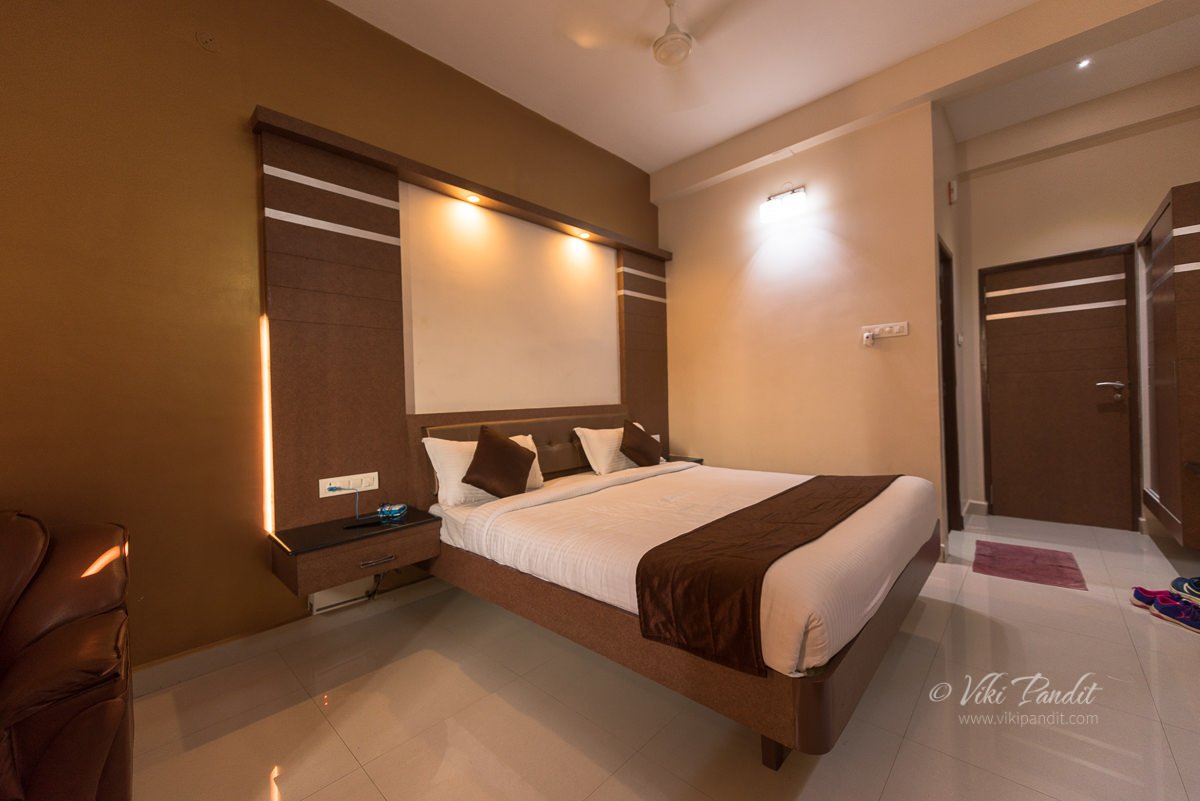
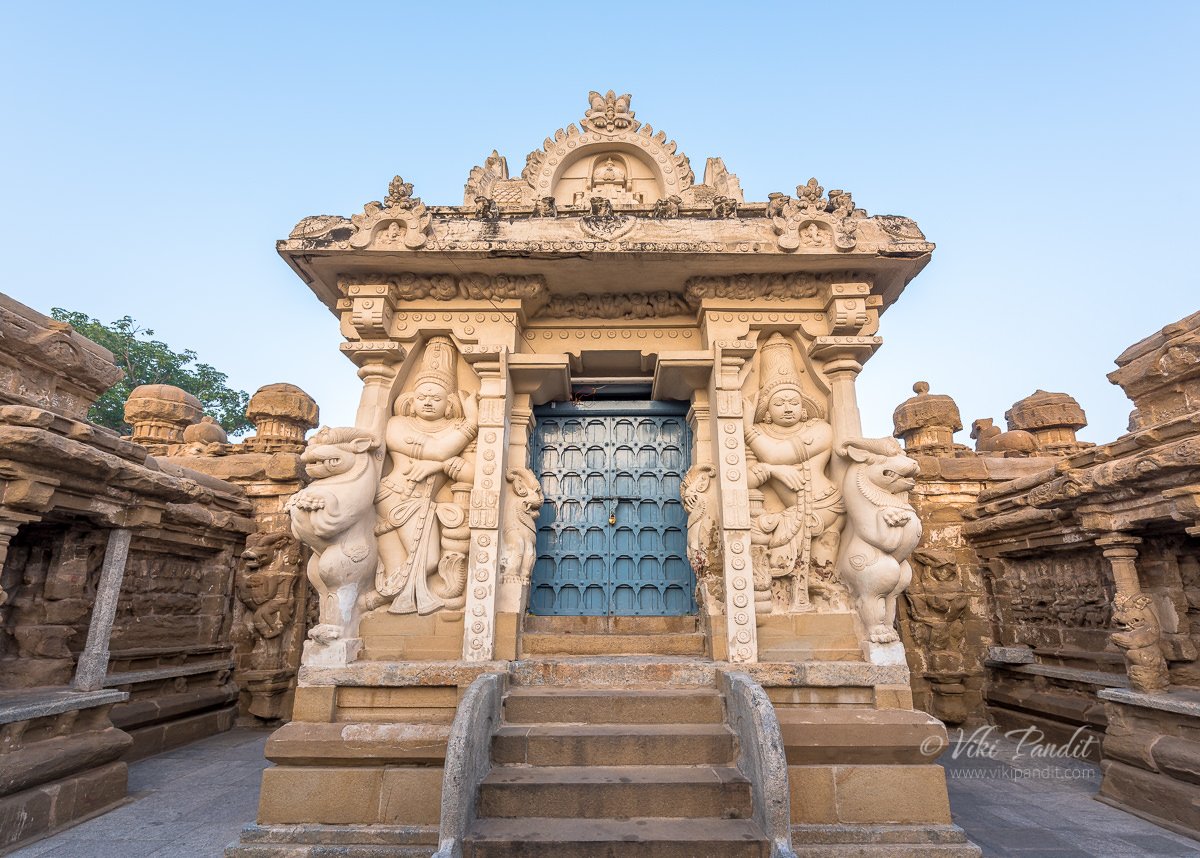
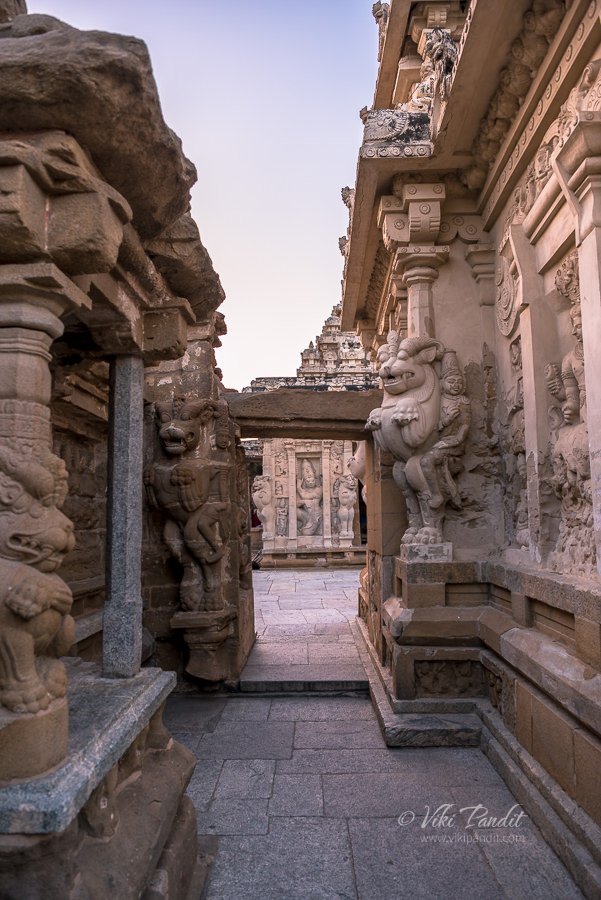

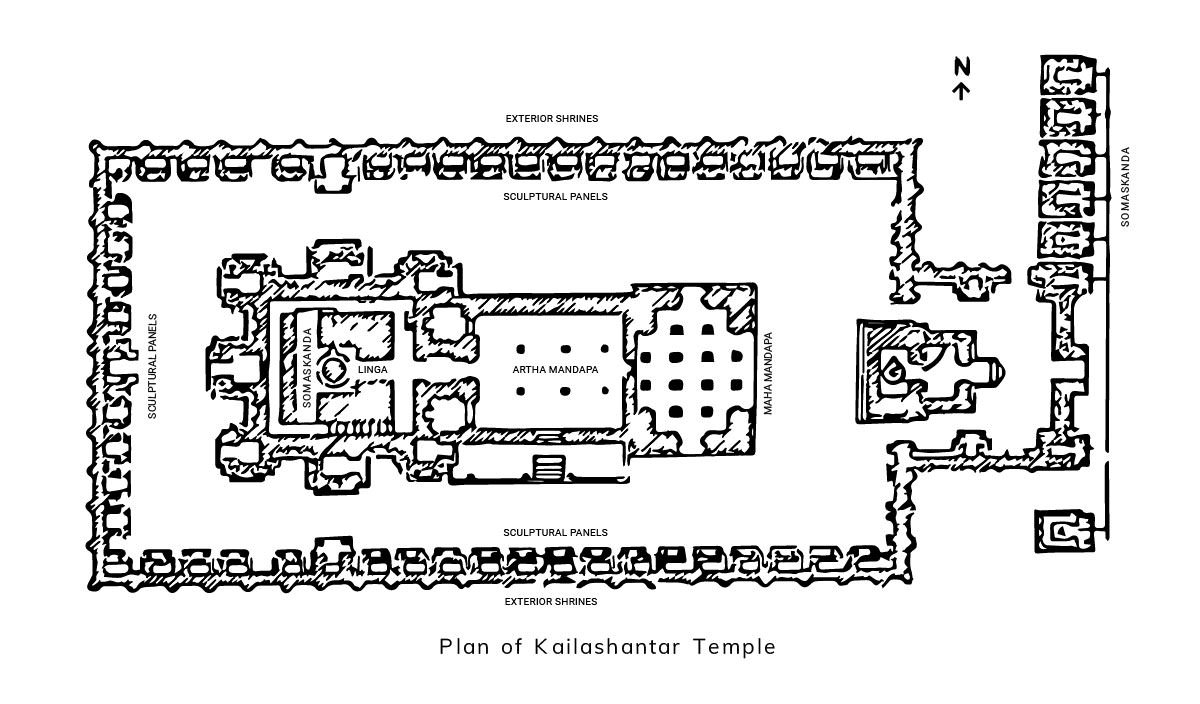



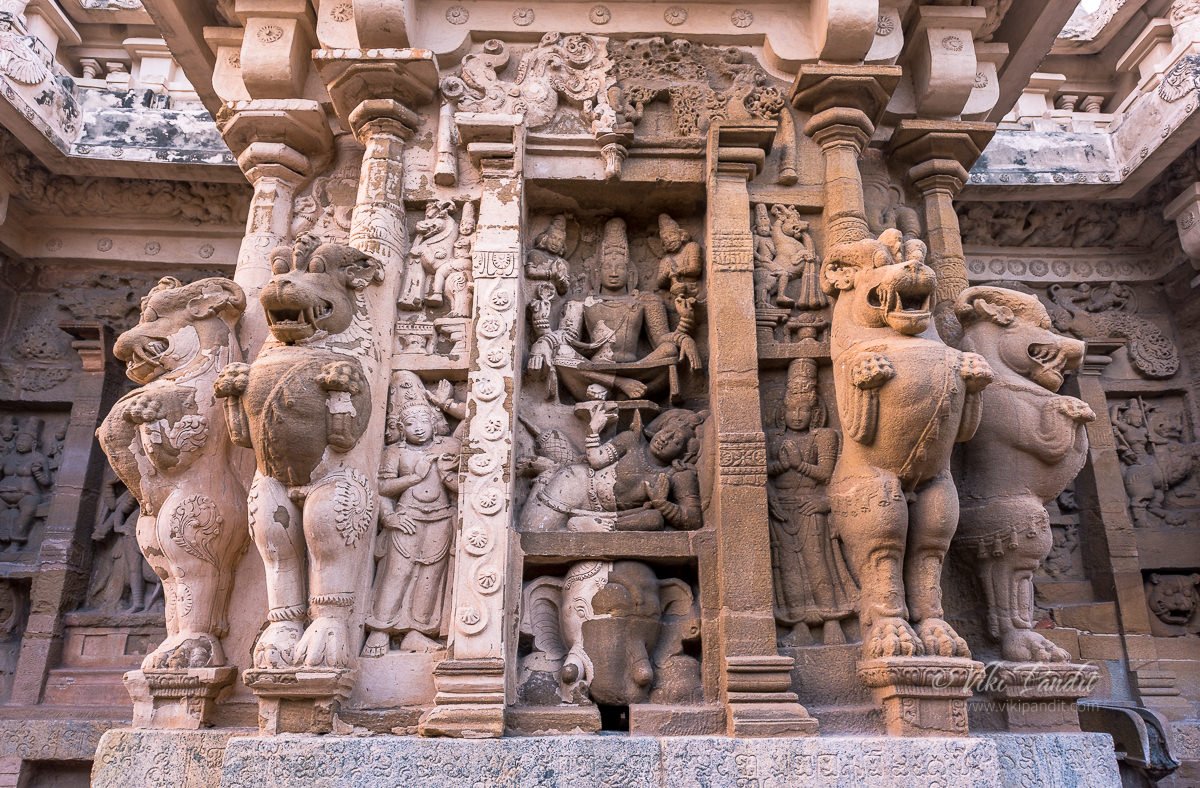
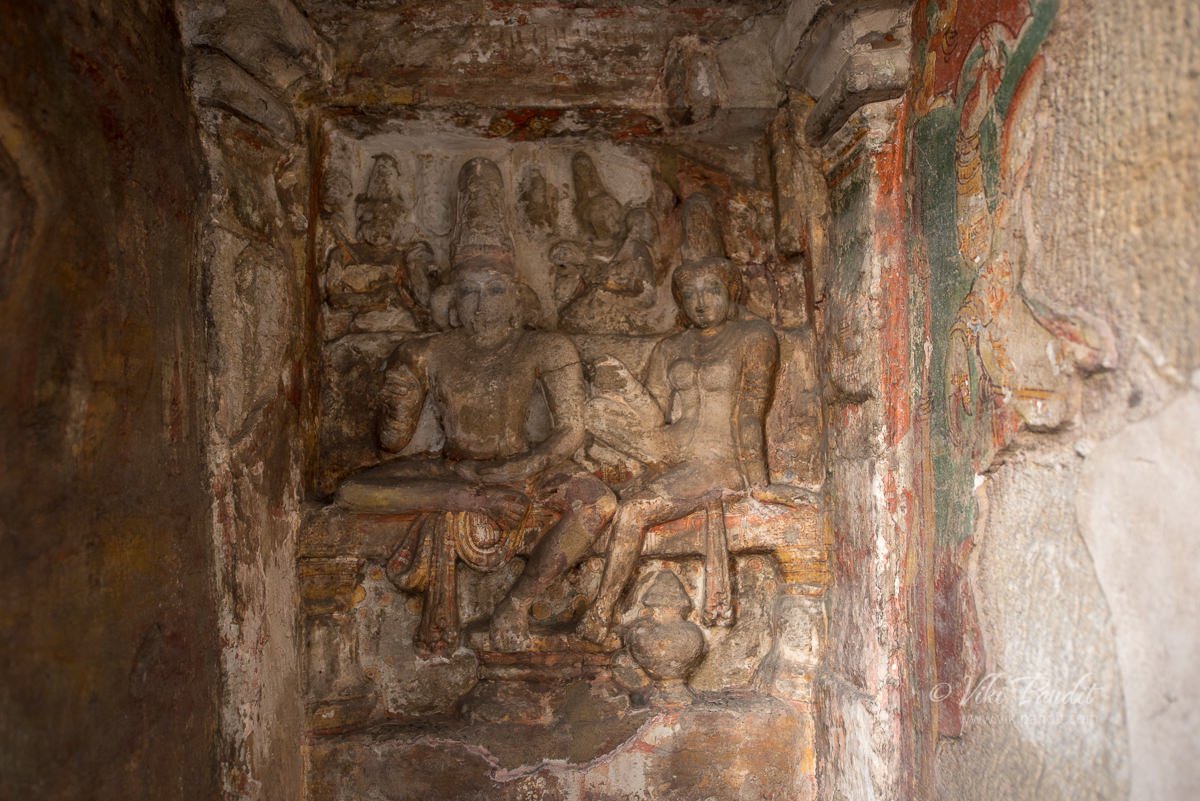



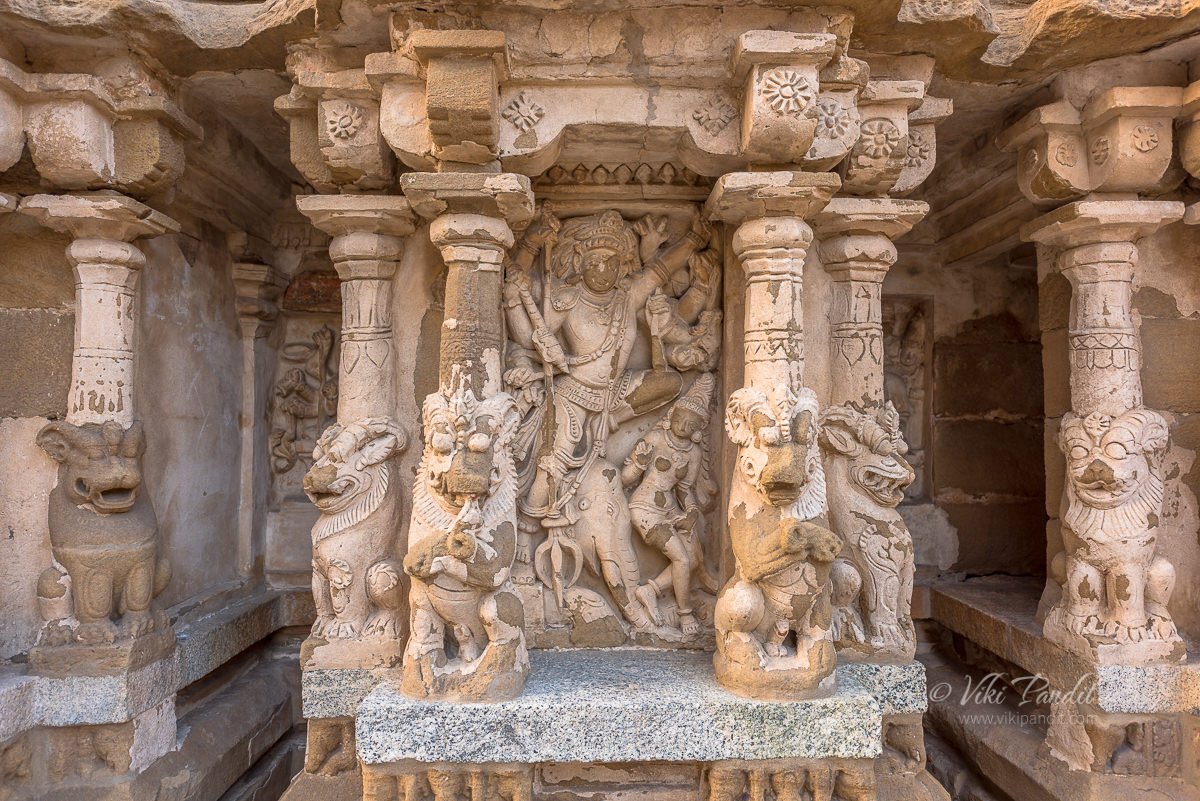


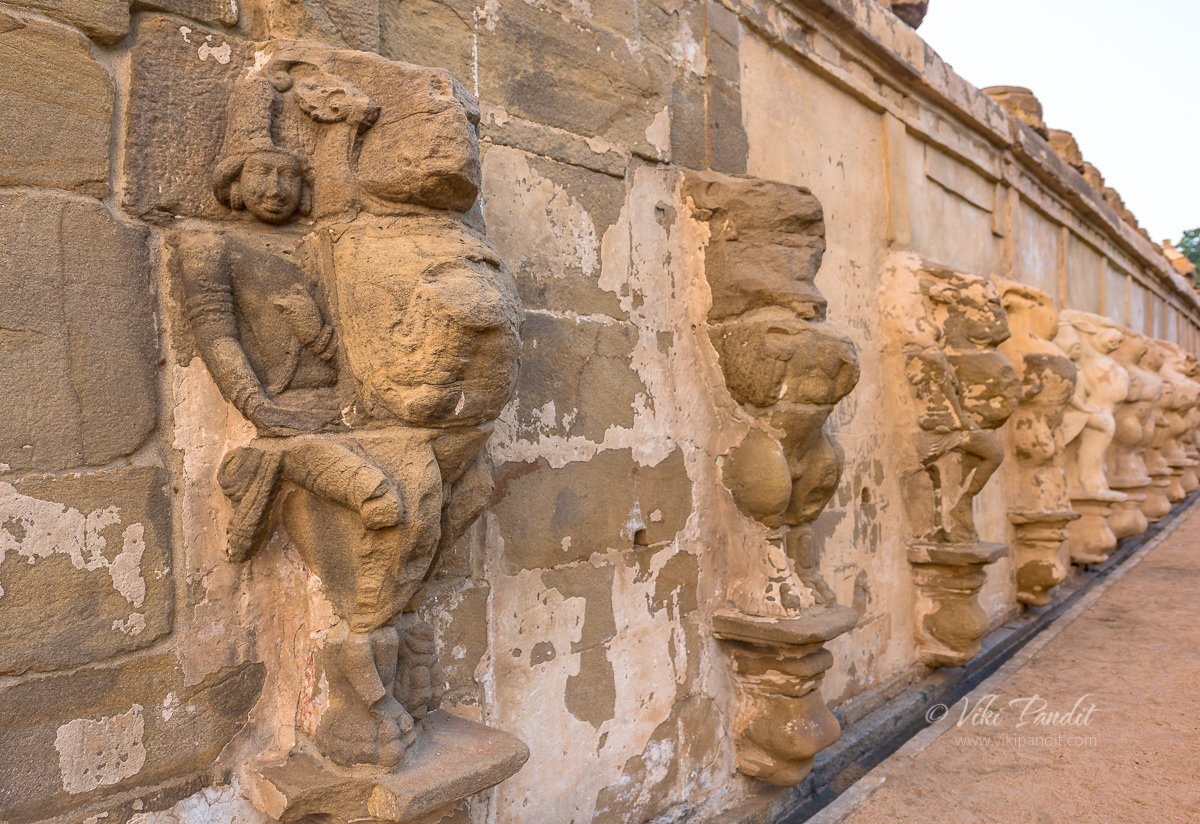


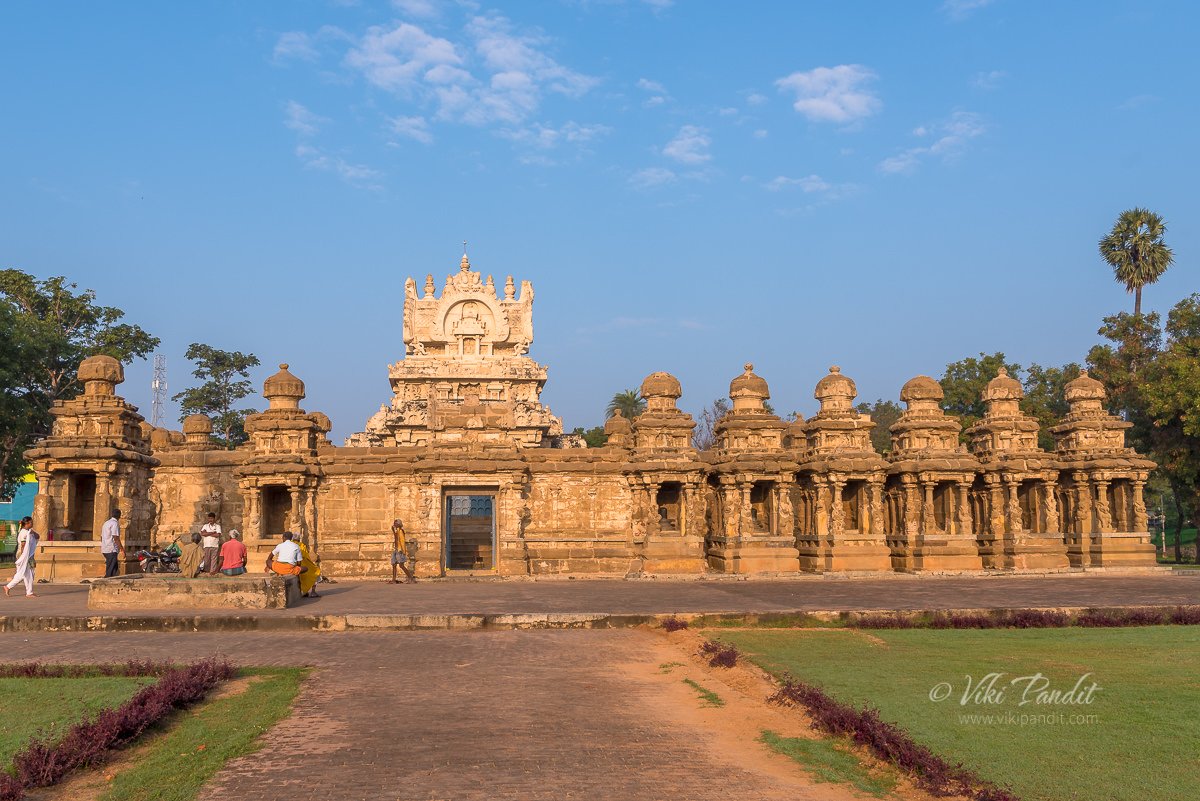


I also visited this Temple in August 2024. It is really a wonderful Temple which requires more time to see all the details. Narayan dear park and these temples are worth to see. My Indian friend has described very well. I am also writing the things which I saw during my Japan visit and preparing a book for Marathi readers’ Chala jag phirya ‘